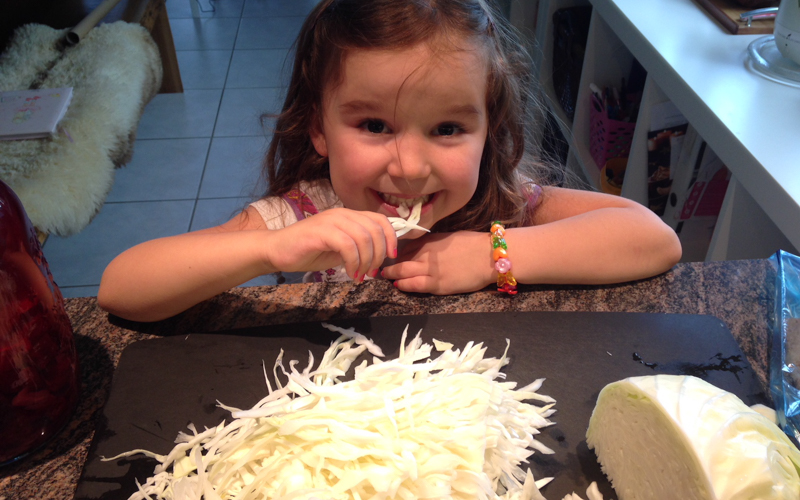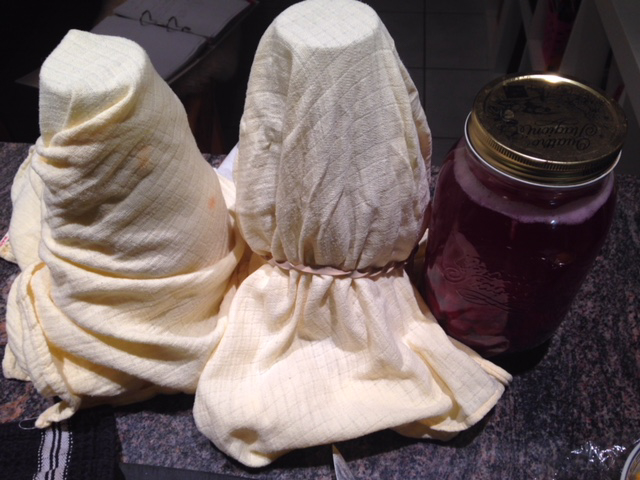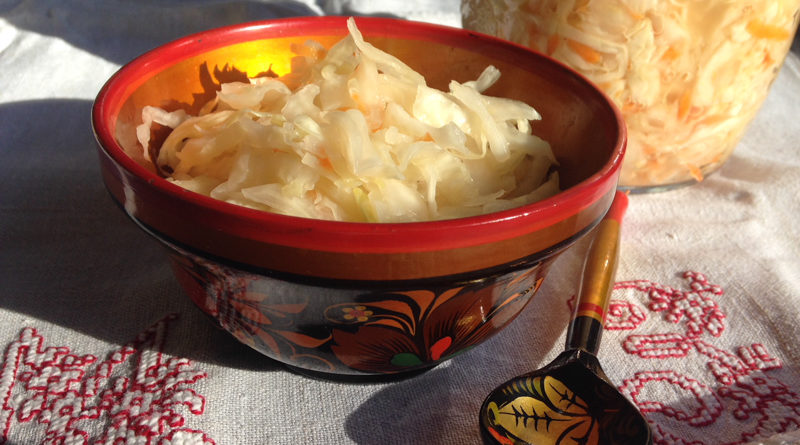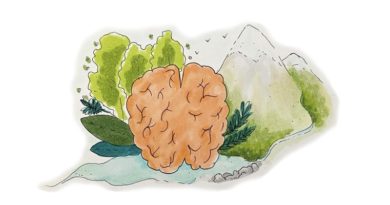Easy Ukrainian Sauerkraut
Sauerkraut is a German word meaning sour cabbage, in Russian it is called Kvashenaya Kapusta, which translates simply as “fermented cabbage.” We almost never ate it as sour and mature as the Germans do; we would start devouring it after only a week of fermentation, with toasted sunflower seed oil from the market, or just as is.
Ukrainian sauerkraut in our family has a very stable recipe: cabbage, carrot, salt, and time. No seeds, no onions, nothing else. I have experimented with plenty of variations, but my favourite remains this basic recipe. It is versatile, and you can always combine it with spices later.

To make sauerkraut you will need these ingredients:
- 1 cabbage of the early autumn variety (the huge ones you see in the shops around September and October) – they are firm and juicy. I struggle to get enough liquid out of a different variety, but it is possible. My cabbage for this batch was just over 3 kg and I got about 2.5 litres of sauerkraut of it (have three 1 litre jars ready).
- 2 medium carrots (flexible amount)
- sea salt or Himalayan salt
Method:
1. Cut your cabbage in quarters. Start chopping from the top in thin slivers. Adjust the angle as you come close to the core to get all the thin leaves chopped. We like big crunchy bits too, so I chop some coarsely, some finely and add some big leaf pieces in between.
2. Once you have chopped a quarter, grate some carrot on top, sprinkle as much salt as you would on a salad of this size – maybe just under a teaspoon. Mix with your hands, massage it a little to get the juices out, but not too much, otherwise it will lose its crunch. Try for salt. It should be slightly saltier than your normal salad. If it is too salty – don’t worry, make your next quarter less salty, it will all get mixed in a jar anyway.
3. Continue chopping and adding carrot, massaging and salting.
4. Pack the mixture into jars. TIP: I find that if I place the jar in the middle of the cutting board, all the spills are easily collected and put back into the jar, otherwise it just goes everywhere.
5. Press down on the cabbage after every couple of inches, so it’s well packed. You want to see juices rise to the top.
6. Take a small, clean glass jar, fill it with water and put on top of your cabbage as a weight to keep all the cabbage under the juices, cover with a muslin cloth and leave at room temperature for at least a week. My grandmother used to use a full-size granite cobble (that we picked up when a street was getting re-cobbled) as a weight in a 10-litre enamelled bucket, but I am working on a much more modest scale. I used to ferment in bigger vessels, but I find that fermenting directly in a jar saves a lot of hassle.

Visit your cabbage daily; press on the small jar and watch bubbles being released from inside the tightly packed jar of cabbage. Take a chopstick or a wooden skewer and pierce the cabbage to release the gas once a day or so.
Try the Sauerkraut after four days and again after seven days; see what you think. If it tastes good to you – sour enough and delicious enough – remove the weight, put a lid on the jar and store in the fridge. It will continue to ferment and mature after you put it into the fridge, but much slower than at room temperature.
We eat it as it is, as a side to sausages or grilled meat or baked potato. You can cook it, too, but heat will destroy the gut-healing bacteria, enzymes and most of the vitamins, so to get the maximum benefit – enjoy it raw!
Benefits:
- Sauerkraut is rich in vitamins C, B and K. It has also plenty of good bacteria (lactobacilli) that we benefit from, especially at times when our immune system needs a boost or after taking antibiotics.
- One of my favourite historical facts about sauerkraut is that in 1768, Captain James Cook took 7,860 pounds of sauerkraut aboard his ship the HM Bark Endeavour as a prevention for scurvy, with encouraging results.
- Furthermore, Kimchi, sauerkraut’s Korean cousin, was historically used during winter to stave off vitamin deficiencies, while early records show that workers building the Great Wall of China ate fermented cabbage regularly when fruit was not available. In fact, the earliest sauerkraut recipes found in Eastern Europe are thought to have come by way of the hordes of Genghis Khan.
Article and photos by Masha Ellis
Masha is a scientist and a financial risk management professional who spends her spare time teaching families how to bring fun back to the table by following ancestral nutrition principles. She lives near Lake Zurich with her eight-year-old daughter. You can follow her on Facebook at https://www.facebook.com/masharoots/ and Instagram: @masharoots




